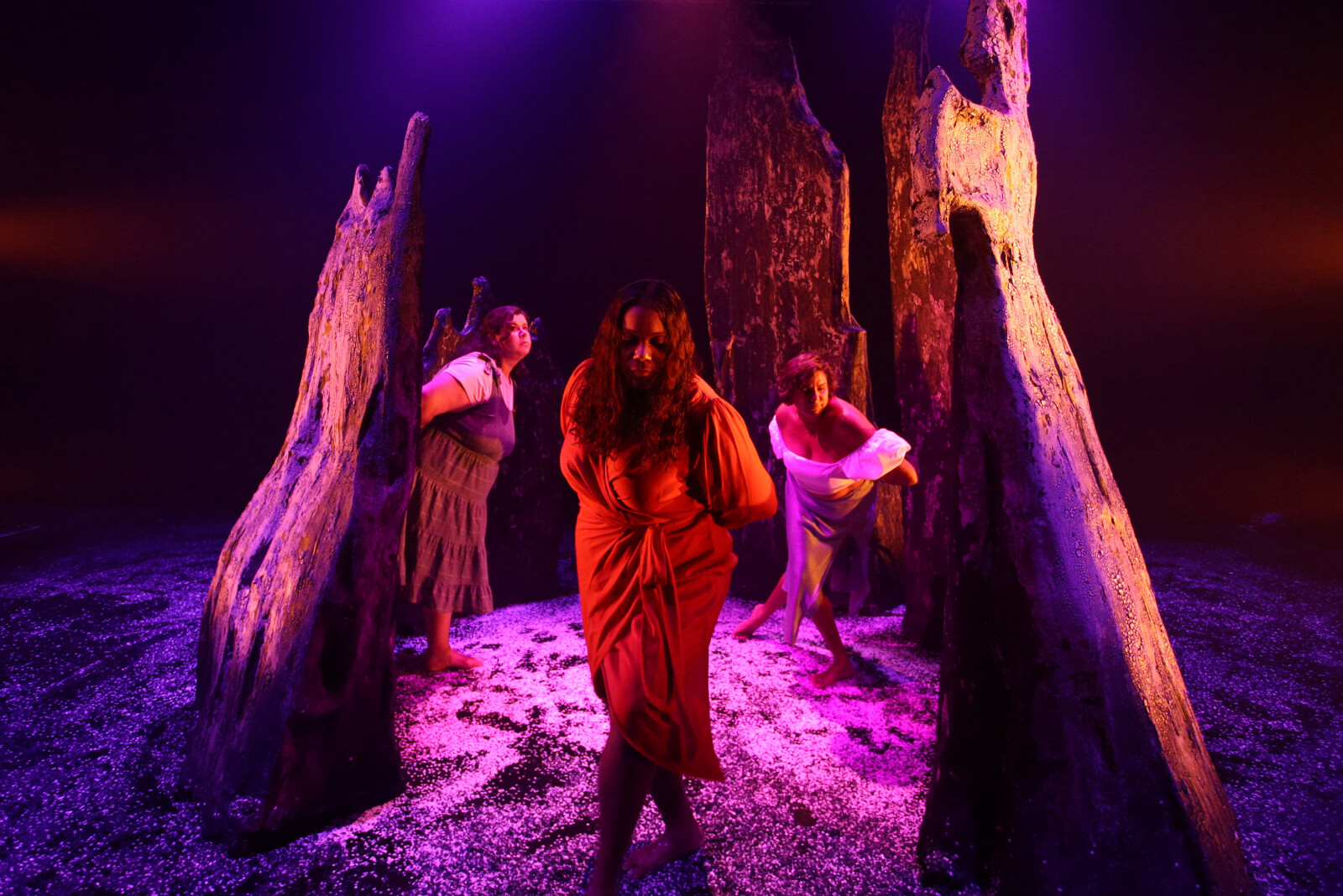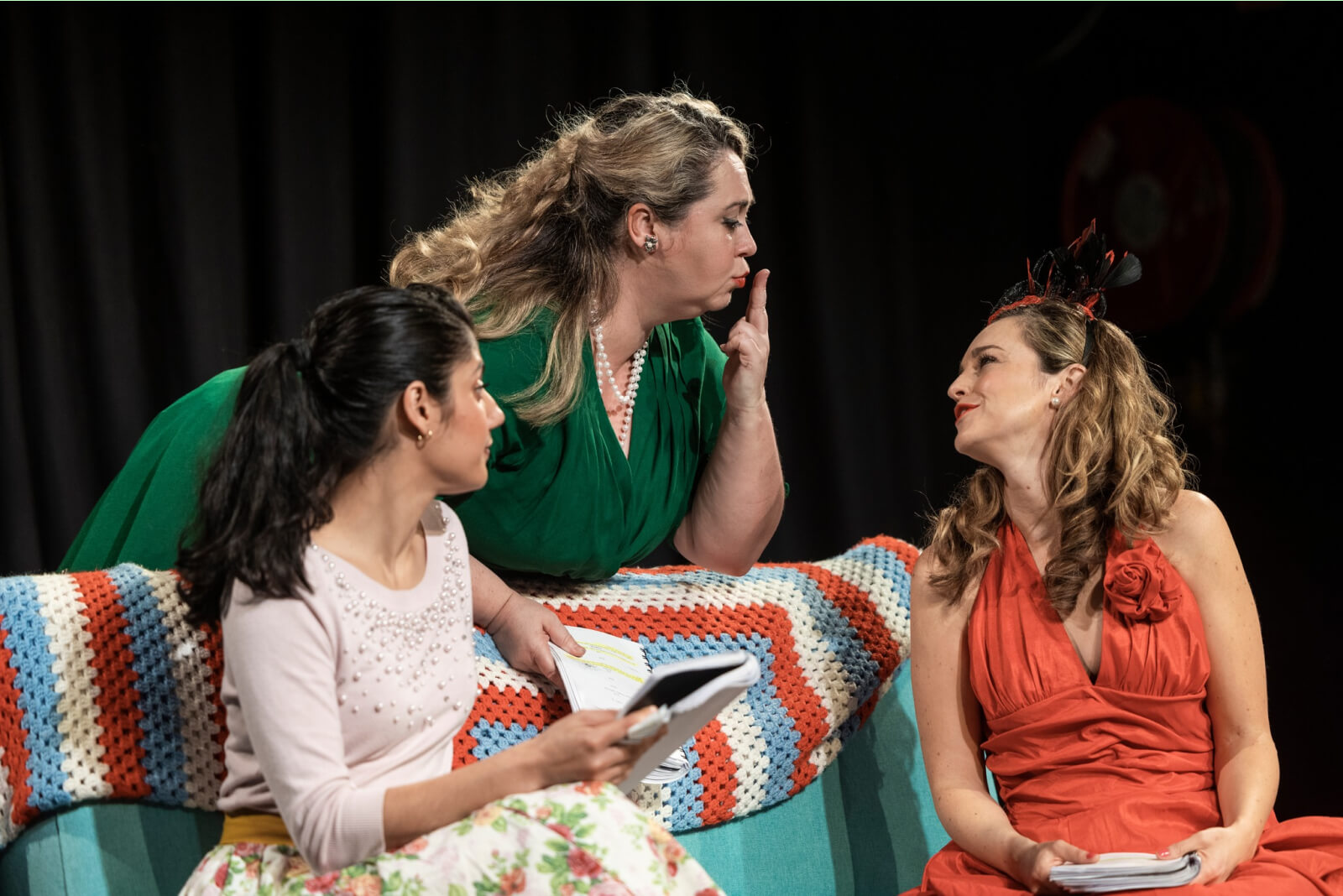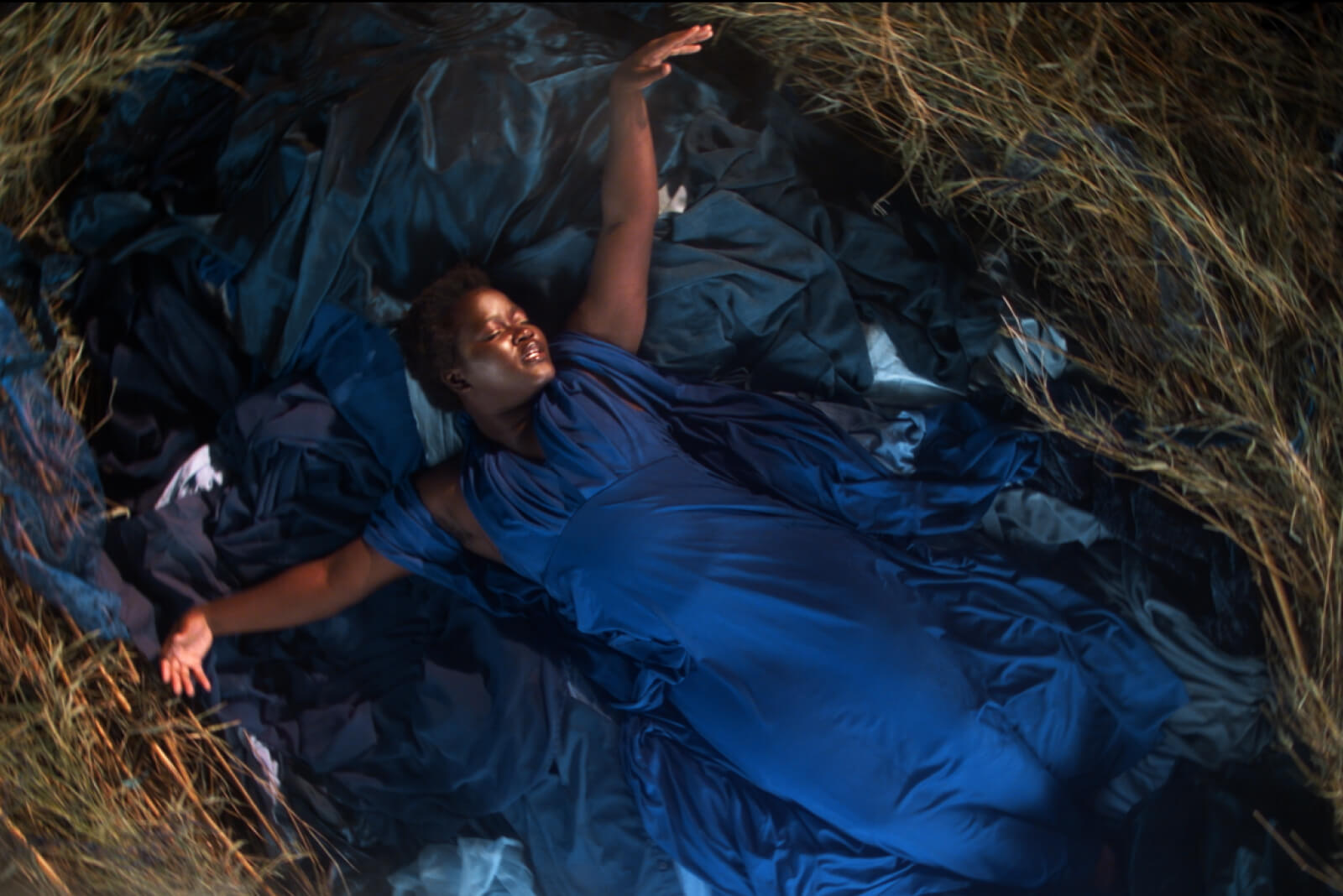
Image credit: Courtesy of Angelina Meany
Read how Angelina transitioned from classical music training to production design in film, television, and theatre since graduating with a Bachelor of Fine Arts (Design for Performance) in 2021.
NIDA: Where did you grow up? Did you always want to pursue a creative career when you were growing up?
Angelina Meany: I was born in Canberra and moved to Sydney when I was nine-years old where my brother attended the Conservatorium of Music. Both my siblings and I trained as classical musicians, so my whole life I was exposed to orchestral concerts, opera performances and stage musicals.
I attended a Steiner school education system in both Canberra and Sydney, which was instrumental to my passion and growth in fine arts. Drawing, making and designing were integrated into all areas of my learning, even in subjects such as history and science. I believe this visual approach to learning and being able to share concepts that were in my imagination with others is core to my career pursuit in the arts. For my HSC, I completed five major projects � Visual Arts, Textiles and Design, Design & Technology, English Extension 2 and Drama with focus on production design.
When I did consider an alternative future path, it was in English and creative writing, also rooted in storytelling and deciphering the written word to create imagery.
NIDA: What made you want to pursue a BFA Design for Performance at NIDA?
AM: My first encounter with NIDA was when I was 15. By this stage I already knew I wanted a career in the arts, but I wasn’t sure of what area and whether this would be as a solo fine artist or someone in a larger team.
I deeply wanted to be a story illustrator or film concept artist, growing up obsessing over Making Of film books. These careers combined my passion for reference research, sketch development and final image design, all to add richness to a written story. Seeing the NIDA Expo was a lightbulb moment � the inspiration I felt when I saw rendered costume drawings, model sets and then the final realised productions on stage made me see my art could have a bigger purpose and audience beyond the page.
I could combine my love of drawing, making, and storytelling to create something physically present and visceral for people to emotionally experience. The small cohorts, working studio environment and highly personalised mentorship that is offered in the design course also really spoke to me, along with the extremely rare opportunity to realise full scale productions before entering the industry.
I applied for NIDA during HSC, not believing I would get in first try but desperately wanting to. I also applied and was accepted into other fine arts and design courses, feeling if I wasn’t accepted into NIDA this round, I would focus on further developing my artistry and portfolio to give me a better chance in the next application.
NIDA was my primary goal and I would’ve kept applying until I was accepted.

Burning (2021). Image credit: NIDA
NIDA: How did you break into the tv and movie industry?
AM: One of the incredible aspects of NIDA is the continued support, referrals and professional contacts you receive as you enter the industry. I broke into the film industry with the help of Bob Cousins � Head of the Design course. He recommended me for an assistant full-time model making job mid last year with Fox/Disney studios.
The art department were looking for someone for three weeks while the current assistant was on leave. I prepared a strong portfolio catered to showcase my model making and how I had developed my designs through using it as a tool. The design presentation tools and how to make a pitch gained at NIDA immensely helped me in this interview process, and all other jobs I have worked on in the last year.
Despite starting the course very unconfident in public speaking and leading a vision, I am now comfortable sharing my work and skill set and saw everyone in my class do the same. After the three-week initial employment period, I was asked to stay on for a further 3 months with the supervisor.
NIDA: What are your latest projects? What are you working on now?
AM: This last year I have taken on a broad array of design roles and creative styles � from productions that only have one day rehearsal, school shows, short film shoots, to fully designed productions.
Leaving NIDA, I wanted to pursue a wide range of experiences in as many different venues as possible to clarify the way I most love to work as a creative. My most recent theatre production design was Camp at the Seymour Centre for Sydney World Pride. It is a wonderful new work by Elias Jamieson Brown, directed by Kate Gaul which covers the vital period of the 70s Gay Liberation Movement that led to the first Mardi Gras in Sydney.
For this work I did both set and costume design, particularly focussing on period styling, materiality and colour palette to draw out the strong nuances between the characters distinct personalities. I have several production design roles lined up in the next few months, as well as some design consulting work for two schools in Sydney.
I am very passionate about continuing my own learning and developing my skills further amongst my working schedule, especially in designing and building my own miniatures and character story illustrations.

Bells are Ringing (2022), Hayes Theatre. Image credit: courtesy of Angelina Meany
NIDA: Did you do an internship/work experience for a production company when you were still a student?
AM: Understandably our year group at NIDA had an impacted internship work experience due to the Covid-19 pandemic. I had been interested in some time in a wonderful film and television studio called ARACOURT based in Sydney. They opened their studio and generously gave their time in sharing with me their professional business process and their future projects, on which I assisted in script analysis, storyboard development, and reference research.
Two design NIDA alumni, Ara Steel and Courtney Westbrook, were perfect mentors at the end of my degree, and like them, my aim outside of working in the theatre and film industry is to create my own business with content in the realms of model making, illustration and original story development.

NIDA Triple J Music Video collaboration (2021). Image credit: NIDA
NIDA: How do you get your projects? Do you apply for work or go by referrals?
AM: NIDA graduates are so very well prepared, that my experience has been very seamless in attaining professional work. All the projects during my degree culminated into a demonstratable portfolio of my skill sets and design aesthetic, that within the first couple of weeks of leaving NIDA I was receiving job offers and have been working on multiple projects at once ever since.
These jobs have ranged from ones referred by and collaborating with mentors I had during the degree, to other industry professionals who saw my shows at NIDA, to referrals from other NIDA design alumni. As soon as you enter the industry, this pool of people continues to grow and spread by word of mouth.
My training at NIDA however has also made me feel comfortable and prepared in contacting new collaborators with my portfolio, particularly in advocating for my work at introductory coffee meetings and interviews. I am not represented by an agent, so I make it a priority to update my website and CV after every project, as well as prepare catered portfolios towards specific skills and services e.g., technical drafting, model making, scenic painting, costume renderings etc. so I am always prepared for any job offer and application.
NIDA: Which one is your favourite work so far?
My two productions in my final year at NIDA hold a very close place in my heart and inspire me with what is possible to this day. Revolt She Said Revolt Again was my first set design that was realised, and the team I worked with were absolutely incredible. With my close friend on costume design, Phoenix McKay, I felt like I could really push my design aesthetic and creativity into a direction I hadn’t gone before, with the exceptional resources at NIDA.

REVOLT. SHE SAID. REVOLT AGAIN. (2022). Image credit: NIDA
As a post dramatic feminist piece, the visual concept felt extremely authentic to me and my experiences, and this fuelled me to be very ambitious with the design. The set design of the show was technically very challenging in its need to go from pristine pink box to deconstructed chaos every performance, and NIDA was the ideal place to problem solve these practical effects.
I learnt so much from other students during this time, particularly our construction manager and props makers. The level of professionalism from emerging artists really was incredible, and it was a true testament to everyone’s immense efforts that Phoenix and I were nominated for a 2022 APDG Emerging Designer for a Live Performance or Event Award.
My other production Burning was equally as paramount to my growth as a designer. As a premier First Nations performance written and directed by Amy Sole, I felt indescribably privileged to be so deeply involved. The style of this production was completely the opposite to Revolt, which was the best thing for my technical and artistic growth. Despite the undeniable contrast of these two productions, stylistically they are so core to me and the lasting poetic but raw impression I strive for in my work.
NIDA: What advice do you have for young students out there who might be interested in pursuing a creative career?
AM: In this industry, things move and change so quickly, whether it be deadlines, scripts or new collaborators, I personally have found huge benefit in reflecting on where I have been and where I am going. It can get to the stage where you get stuck. You may keep repeating the same patterns of working that aren’t serving you, get artistically burnt out or become plagued by self-doubt. Giving yourself time to reflect on your achievements, your obstacles and inherently what it is you truly love doing and what made you inspired initially has helped me immensely re-find my ground and purpose.
I think it’s incredibly important to balance working on large scale production projects with your own creative endeavours, whether that be taking life drawing classes, painting 3D printed figurines at home or reading. In my experience, these things fuel my imagination and drive and keep me focused on the creative path I want to be on.
###
NIDA’s BFA (Design for Performance) prepares you for a career in set design, costume design, props and lighting design for live and film productions. Read more here.
Thank you for keeping in touch and informing us of your activities. We encourage our alumni to let us know what they’re working on. Please email us with your updates.
It is with great pride that we recognise all our alumni.
Listed below are a few of them who graduated with BFA (Design for Performance):
Ruby Jenkins (2022)Working across Adelaide and Sydney, Ruby worked on Famous Last Words at Goodwood Studios, Kairos at Carriageworks (as part of Sydney Festival) and Turn Up your Radio exhibition at the Adelaide Festival Centre.
Lochie Odgers (2022)Just finished set model making for Charlie Davis for La Boheme for WA Opera and is currently designing ETC: Breakthrough.
Bella Saltearn (2021)
Currently designing an immersive bar and music venue at 5 Eliza, Newtown.
